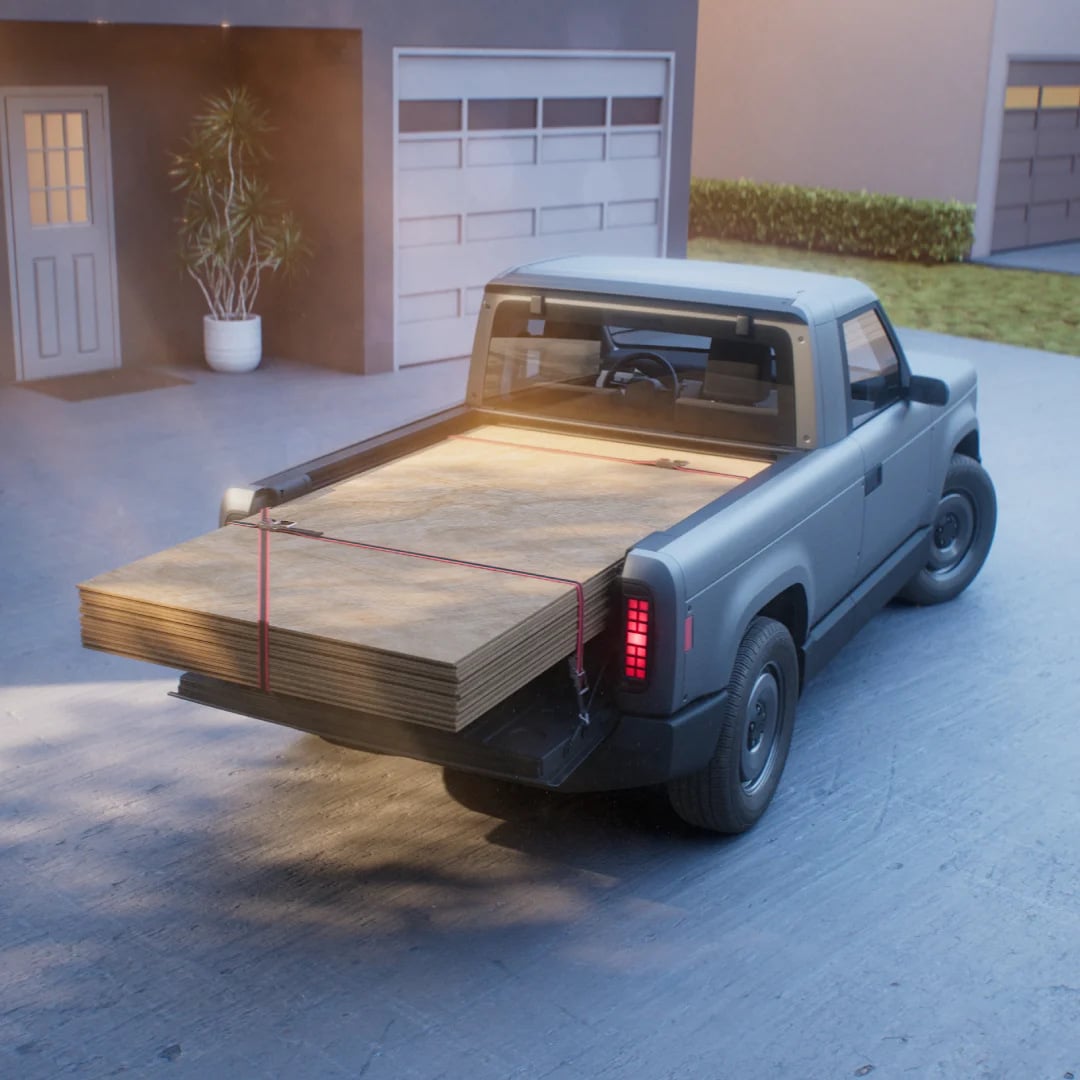Introduction: An Electric Truck with a Simple Design Filling a Market Gap
Amid the rapid growth of the electric vehicle market in the United States, Slate has emerged as a startup offering a different vision. Unlike many companies focusing on complex technologies or luxurious designs, Slate has chosen a simpler and more practical path.
What sets the company apart is its carefully crafted, minimalistic design, which reflects a clear philosophy aimed at providing an affordable and eco-friendly solution at the same time. Slate seeks to fill a real gap in the market, as affordable electric vehicle options remain limited despite increasing demand.
The Customization Concept: An Affordable Vehicle with a Personalized Experience
One of the most striking features of Slate vehicles is their starting price point. The base model starts at $20,000, which is considered relatively low in the electric vehicle market. This version is known as the “Blank Slate,” reflecting the company’s philosophy of leaving ample room for personal customization.
Multiple Modification Options
Slate embraces the idea of empowering customers to build their vehicles according to their unique needs. Through a set of easy-to-assemble accessories, the compact two-seater truck (measuring 4434 mm in length) can be transformed into a five-passenger SUV. This flexibility extends to the vehicle’s shape, allowing owners to choose between a traditional boxy design or a sloped-back style for a more aerodynamic appearance.
Exterior Customization
The customization doesn’t stop at the internal structure. The company also offers a variety of vinyl wrap kits in multiple designs. What’s unique is that these kits are specifically designed to be easily installed by the customers themselves, giving every owner the opportunity to personalize their vehicle’s exterior according to their taste—without the need for complex technical skills.

Focus on Simplicity and Core Functions
Despite the flexibility that Slate offers in customization, the company has remained true to its core vision: providing a simple, durable, and low-cost vehicle. Slate deliberately avoided unnecessary luxury features that inflate prices without adding real value to the daily driving experience.
Practical Technologies Without Complexity
The company opted for steel wheels instead of more expensive alloy rims—a decision that both reduces production costs and enhances the vehicle’s durability. Slate also replaced conventional power windows with manual window controls, aiming to reduce potential malfunctions and keep costs low.
Even the entertainment system reflects this philosophy of simplification. Instead of costly integrated screens, Slate utilizes the user’s own smartphone, which can be mounted on a universal holder equipped with a USB port. This setup allows the phone to serve as the vehicle’s main interface and display, lowering costs while giving the user the freedom to rely on their familiar device.
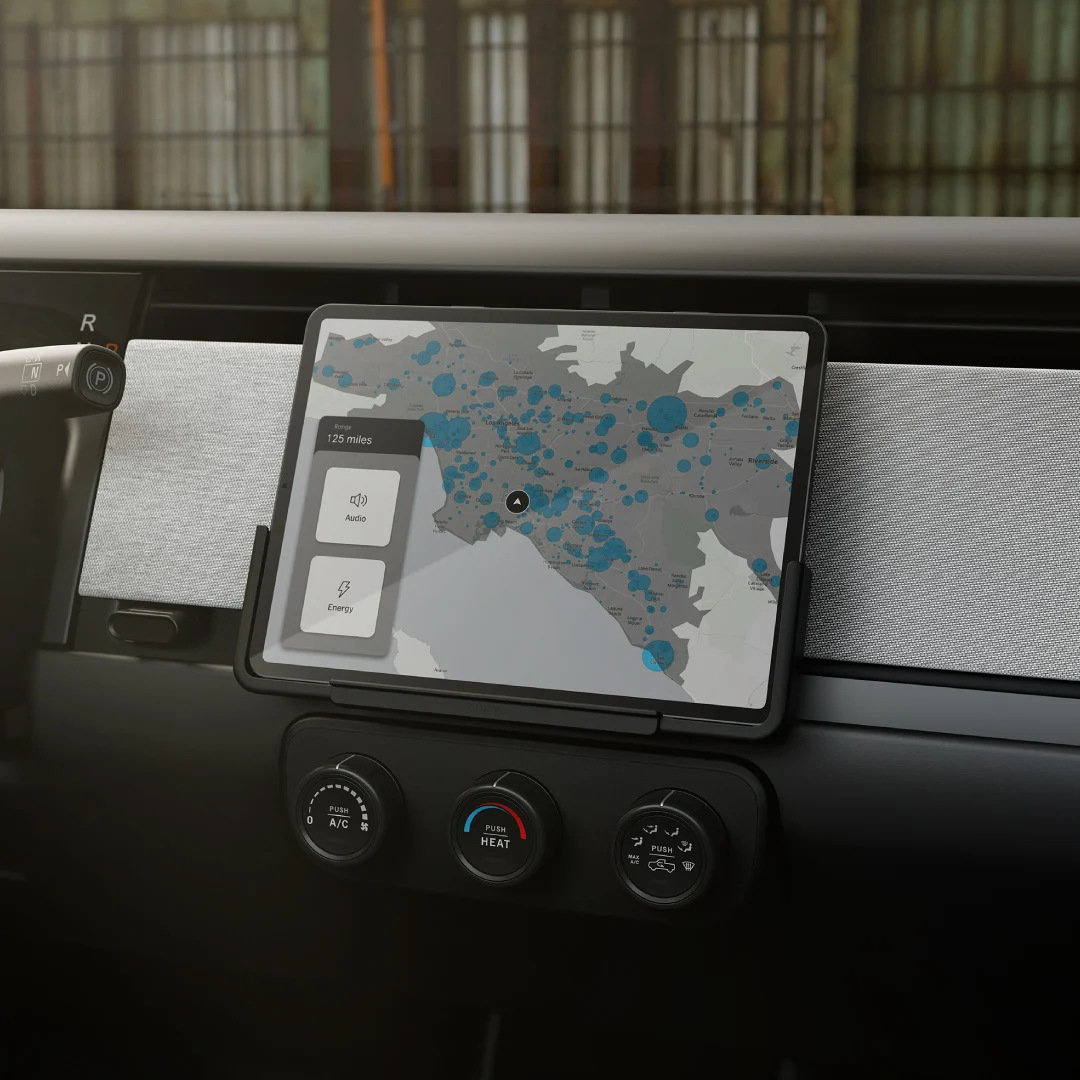
Performance and Driving Range: Flexible Options to Fit Different Needs
Slate offers its electric vehicle with multiple configurations to suit users’ varying performance and range requirements.
Standard Battery
By default, the vehicle comes equipped with a 52.7 kWh battery and a 150 kW rear-wheel-drive system, allowing users to drive up to 150 miles on a single charge. This range is well-suited for daily urban use and short to medium commutes.
Optional Extended-Range Battery
For users who require longer distances without frequent charging stops, the company offers an optional 84.3 kWh battery, increasing the driving range to approximately 240 miles. This flexibility gives customers the freedom to choose what best fits their driving habits and daily needs.
Safety: A Non-Negotiable Priority
Even though the company focuses on offering a low-cost vehicle, it has not compromised on essential safety standards. The vehicle comes equipped with key safety features, including:
• Active Emergency Braking System
• Forward Collision Warning System
• Up to Eight Airbags Strategically Positioned for Passenger Protection
A Well-Balanced Approach
This careful balance between affordability and adherence to safety requirements reflects Slate’s philosophy of delivering a practical, safe, and widely accessible vehicle.

Launch Timeline and Investment Support: A Project Backed by Industry Giants
Delivery Timeline
The first deliveries of Slate’s fully electric truck are expected to begin by the end of 2026. The vehicle is manufactured in Indiana, USA, reinforcing the company’s strong presence within the local automotive market.
Strong Investment Backing
The project is supported by prominent figures in the investment and technology sectors, including Jeff Bezos, the founder of Amazon. This financial and strategic backing reflects investors’ strong confidence in the company’s vision and market approach.
A Conversation with the Design Leader: Solid Background and Clear Mission
Wallpaper* magazine conducted an interview with Tisha Johnson, Head of Design at Slate, who brings extensive experience in automotive and product design. Her impressive track record includes working with renowned companies such as:
• Volvo
• Polestar
• Herman Miller
• Whirlpool
Design Vision
During the interview, Tisha spoke passionately about her team’s commitment to creating an affordable electric vehicle that can truly make a positive difference in people’s lives, steering away from the mainstream focus on luxury, high-priced cars.

A Personal Vision Leading a Project for Change
Returning to the Roots of Design
Tisha Johnson shared a personal turning point in her career, where she began to reassess her goals as a designer. She revisited the original motivations that led her to choose this field—most importantly, her desire to create an affordable vehicle that meets the needs of a market often overlooked.
Contrasting Market Trends
During her studies, most of her peers focused on designing luxury or specialty cars targeting a limited audience. However, Tisha believed that affordable cars had the greatest impact on improving people’s lives, even though such options are not readily available in American markets.
Where Vision Meets Opportunity
Despite her long career at major global companies, Tisha hadn’t found a real chance to pursue this mission—until she discovered the Slate project. It was a venture that asked bold, unconventional questions about the future of mobility.
That moment became the driving force that led her to join the team and help push the project forward.
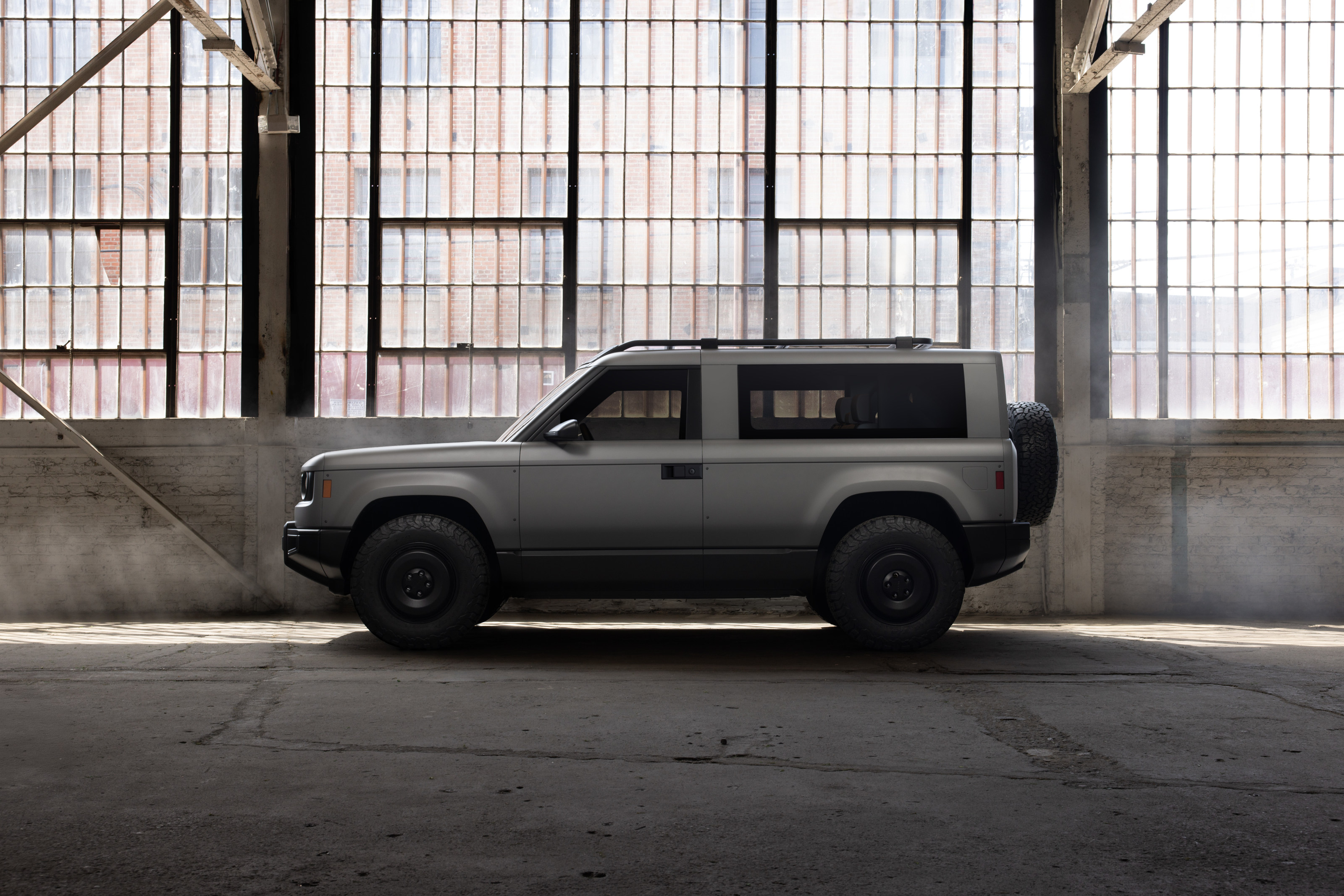



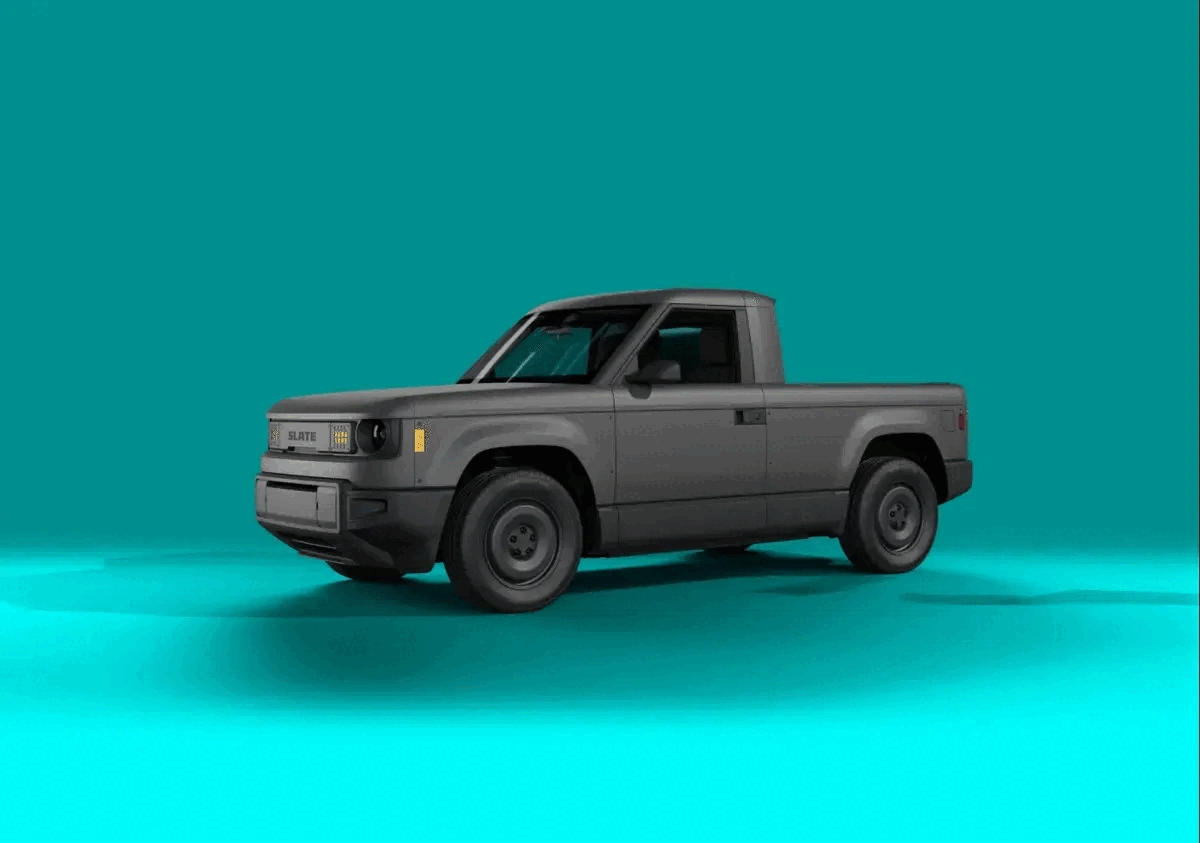
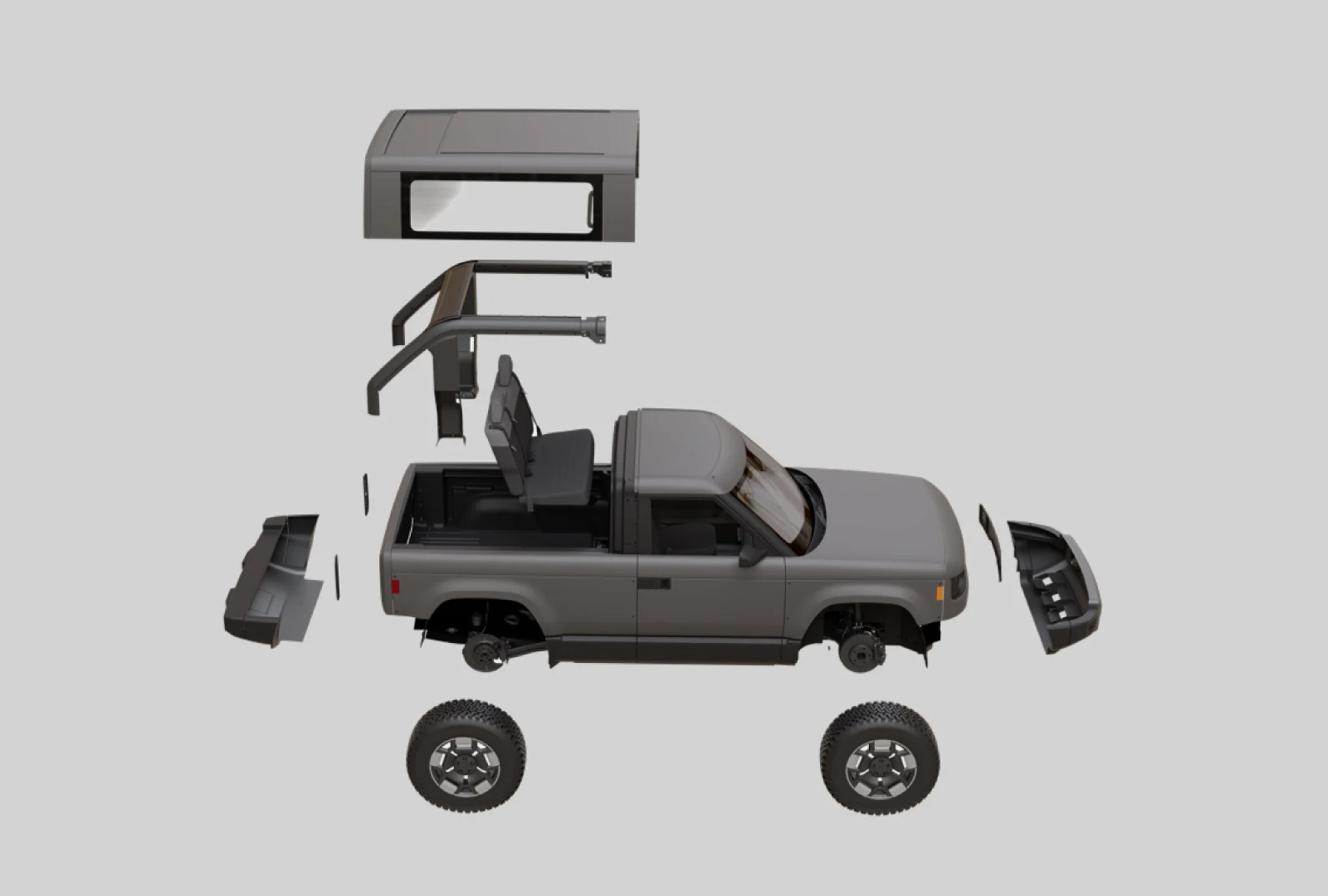
A Design Team with Diverse Expertise
When Tisha Johnson joined Slate in December 2022, the company was a small team of fewer than 20 employees. Over time, the company has grown to include several hundred employees, though the design team has remained intentionally small. Despite its size, the team brings extensive experience, with designers who have previously worked at major companies like Rivian and Ford.
Smart Cost-Reduction Philosophy
How Does Slate Achieve the $20,000 Price Point?
Tisha explained that reaching this competitive price relies on simplification and minimizing manufacturing complexity. The company strategically uses off-the-shelf components instead of developing every part from scratch, which helps control costs while maintaining quality design.
One of the most significant cost-saving decisions was completely eliminating a traditional paint shop, which removed a major financial burden.
Innovative Materials and Easy Customization
Injection-Molded Plastic Body
Instead of using conventional steel panels, Slate uses injection-molded polycarbonate plastic, with the option to integrate color directly during production. This eliminates the need for painting and enables practical, accessible design variations.
Effortless Vehicle Customization
The smart design includes clear guide lines on the vehicle’s body, making it easy to apply vinyl wraps accurately, even for users with no prior experience. This aligns with the company’s mission to offer a vehicle that can truly reflect each user’s personality.
Supporting Customization and DIY Assembly
Flexible Assembly Options
The car is engineered to appeal to DIY enthusiasts, but the company also offers a network of service providers for those who prefer professional installation. Customization options go beyond simple wraps and include practical add-ons like:
- An SUV kit to convert the vehicle from two seats to five.
- The option to add an SUV roof for transporting more passengers.
Current Project Status
The vehicle is currently in the prototype and early pre-production phase. The company is working towards its goal of delivering the first units by the end of 2026.
A Simple, Flexible Buying Model
Slate emphasizes that the purchase process will be direct and hassle-free, with vehicles sold straight to consumers without intermediaries or complex distribution networks. The idea is for customers to buy the car easily and continue to personalize it over time, creating a lasting, unique experience.



